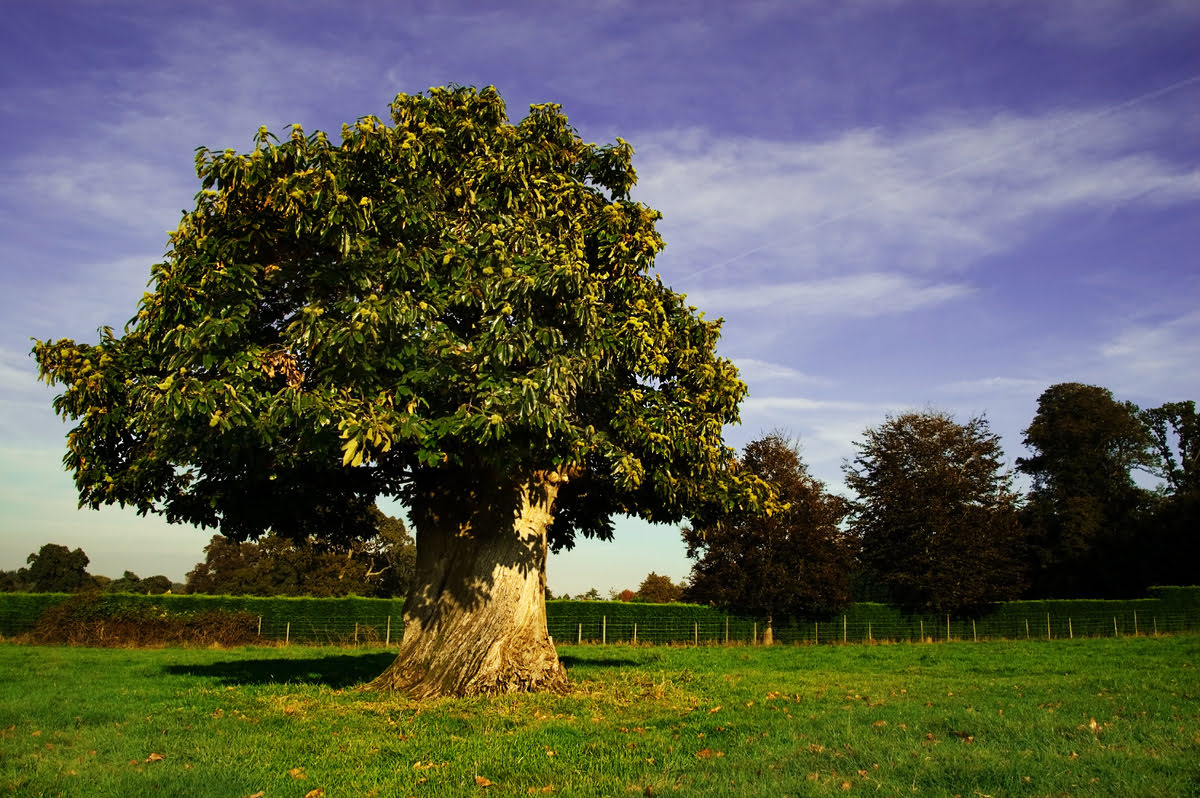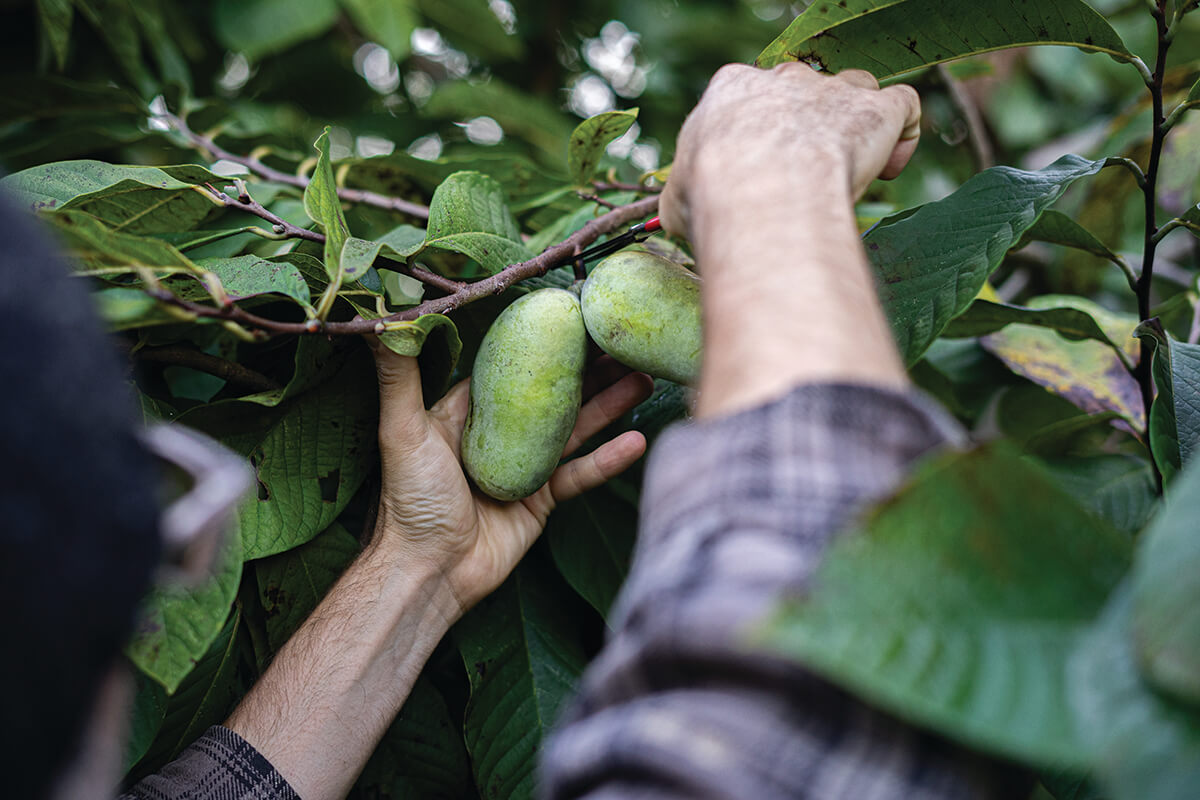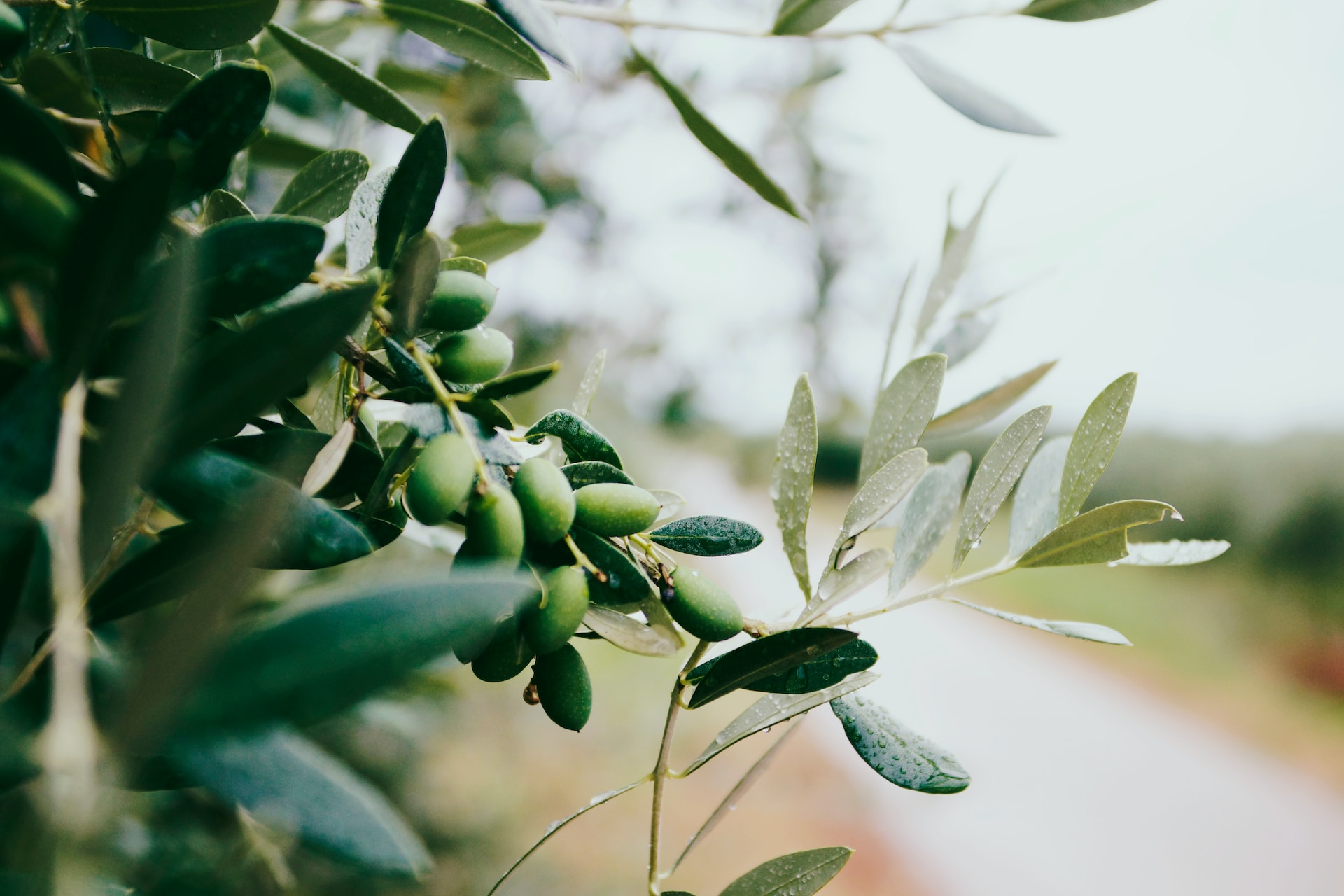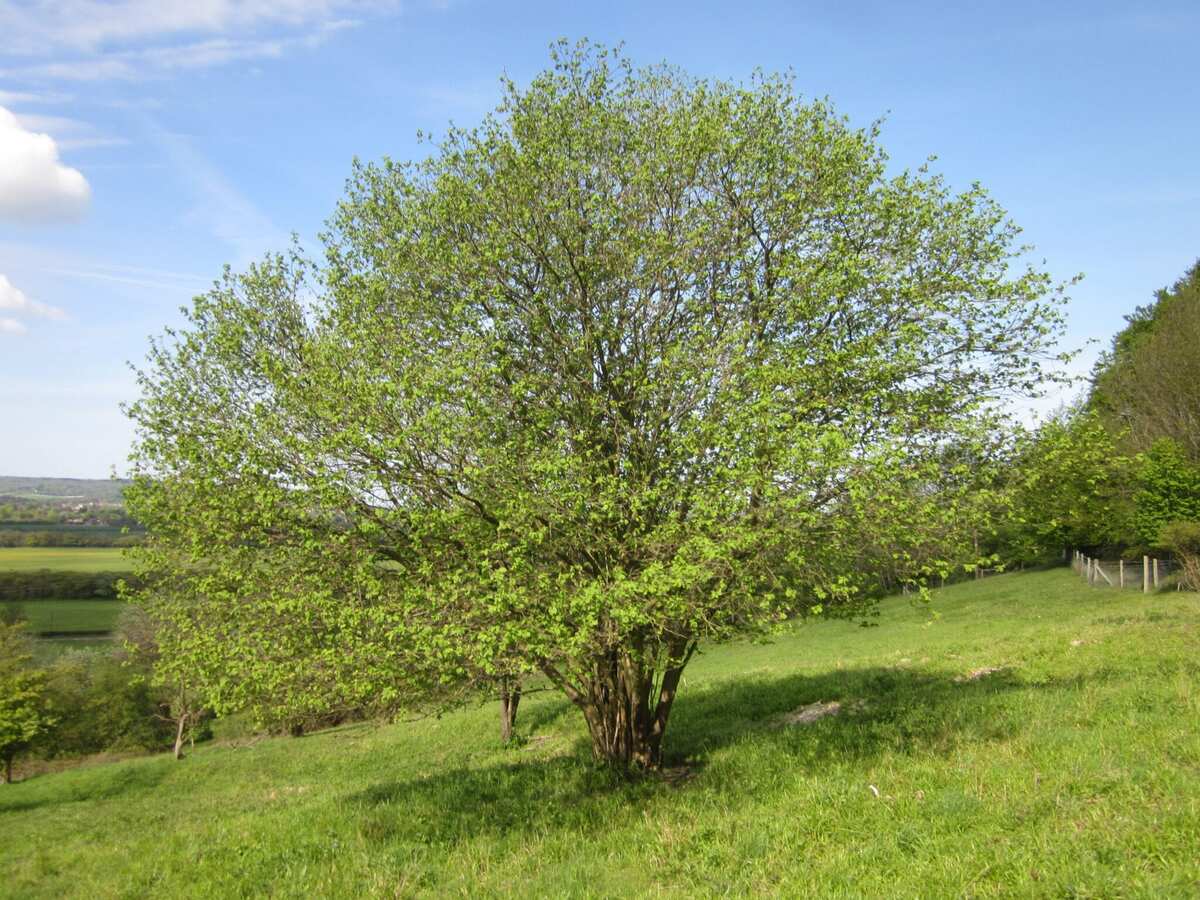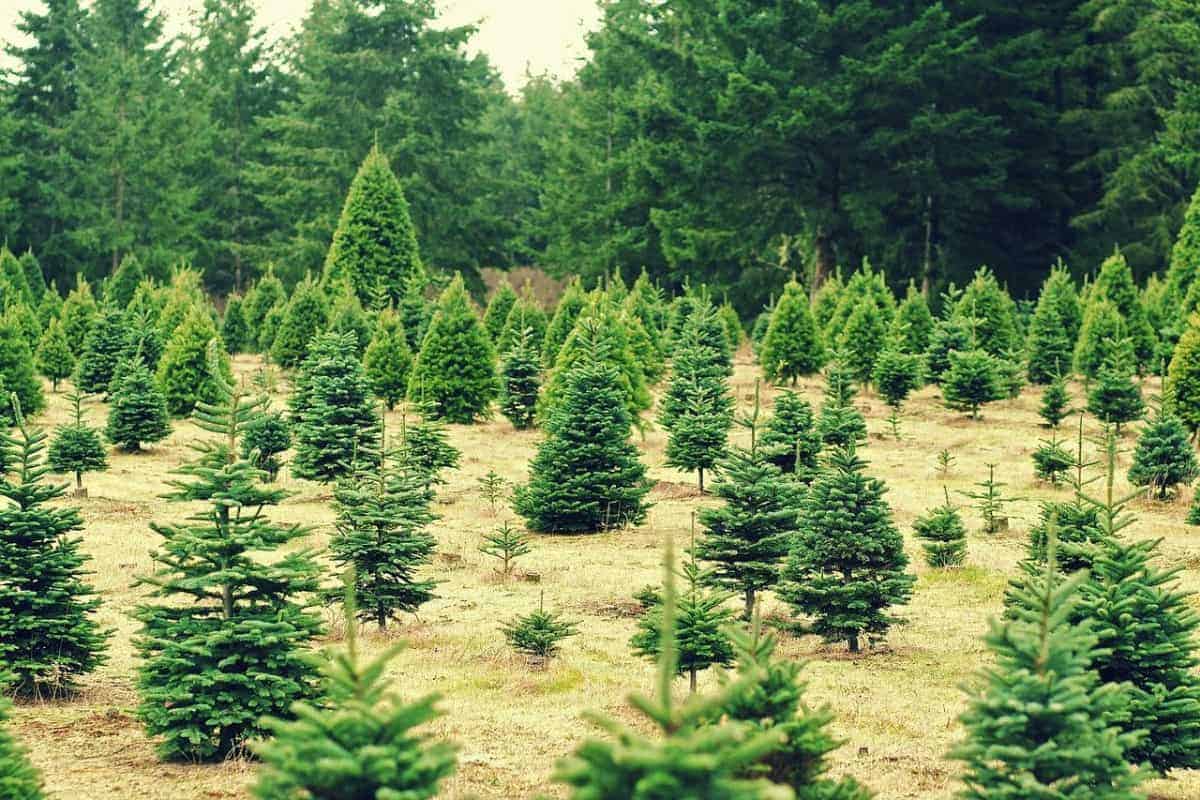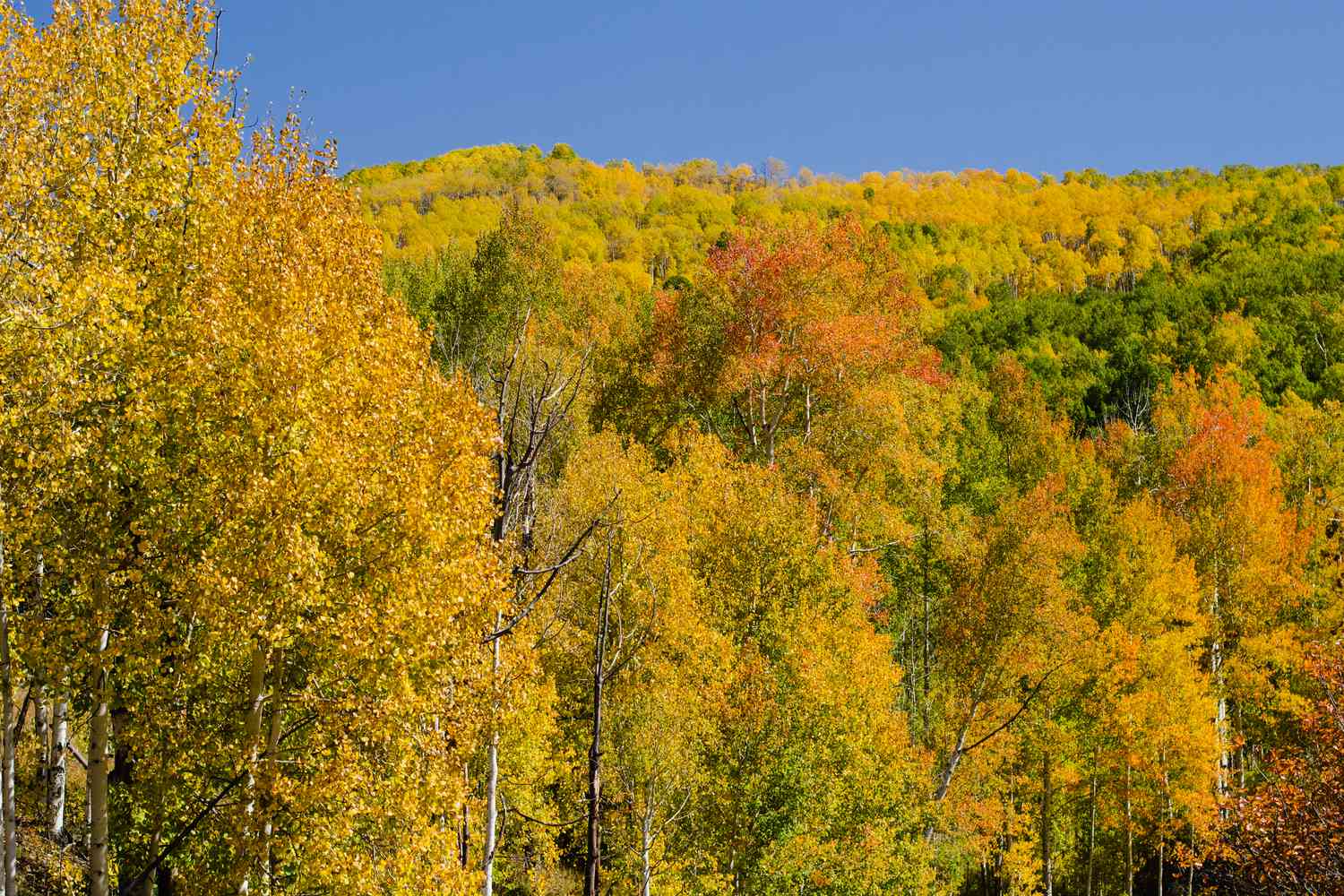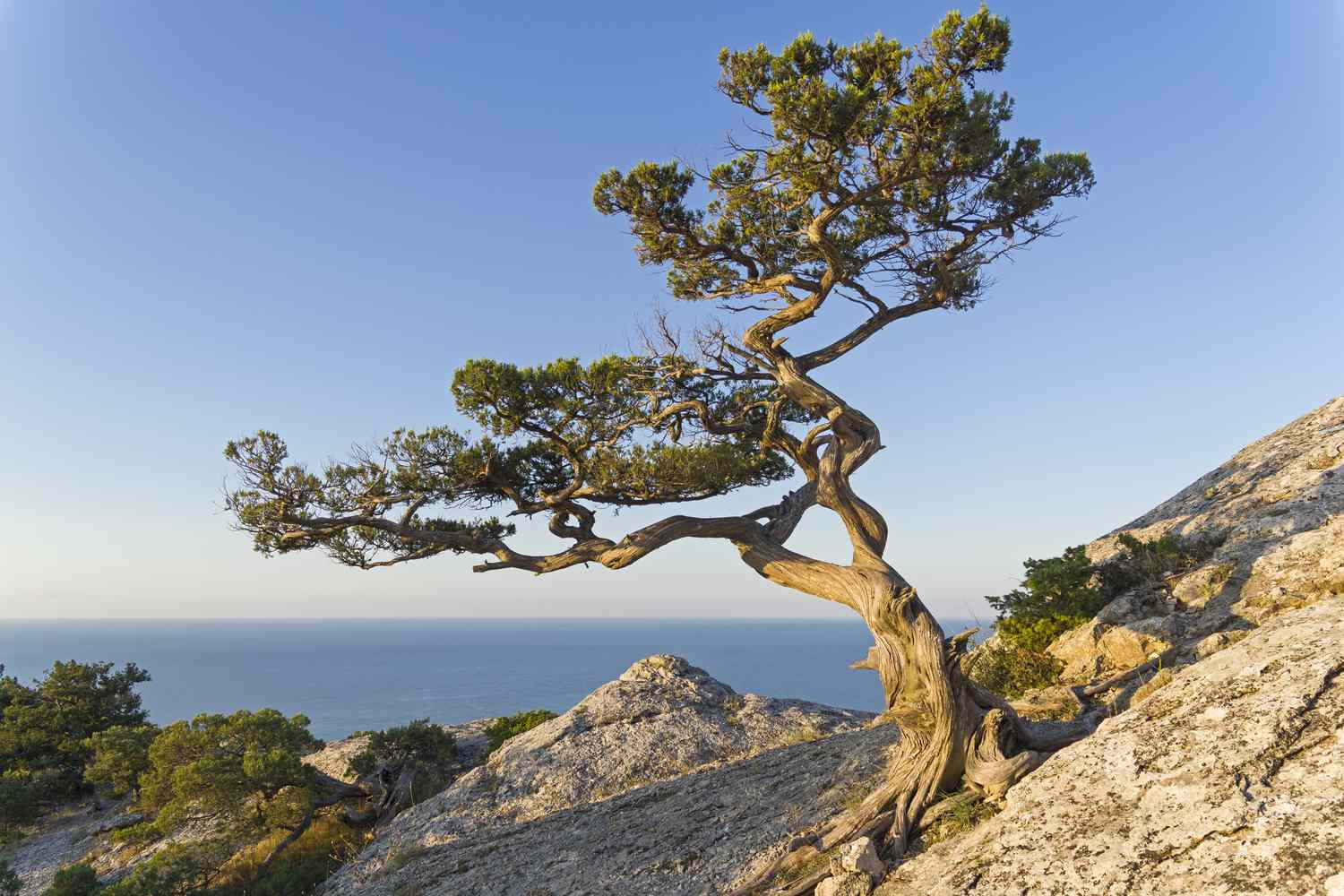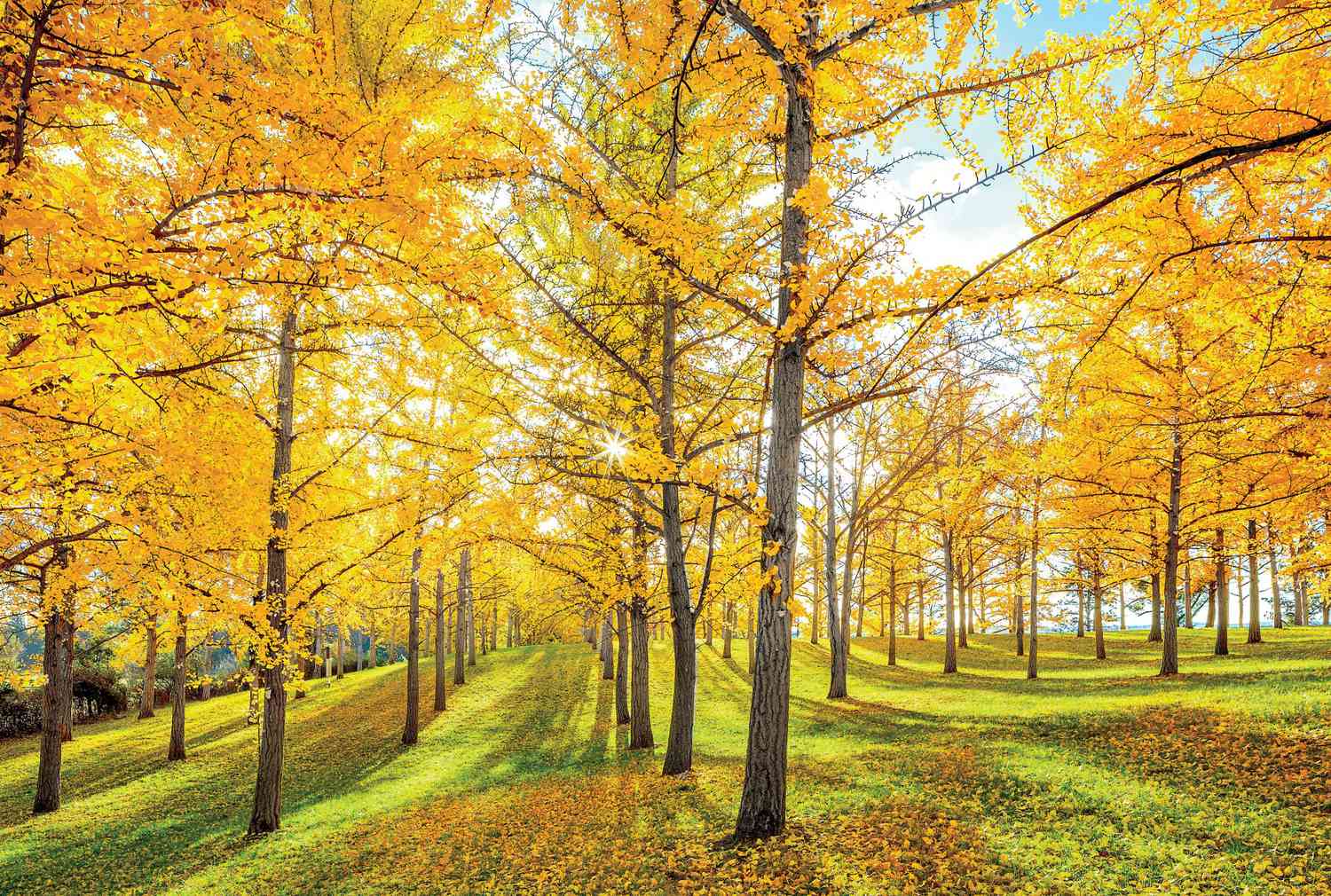Home>Gardening Techniques>Plant Care>Where Do Cork Trees Grow
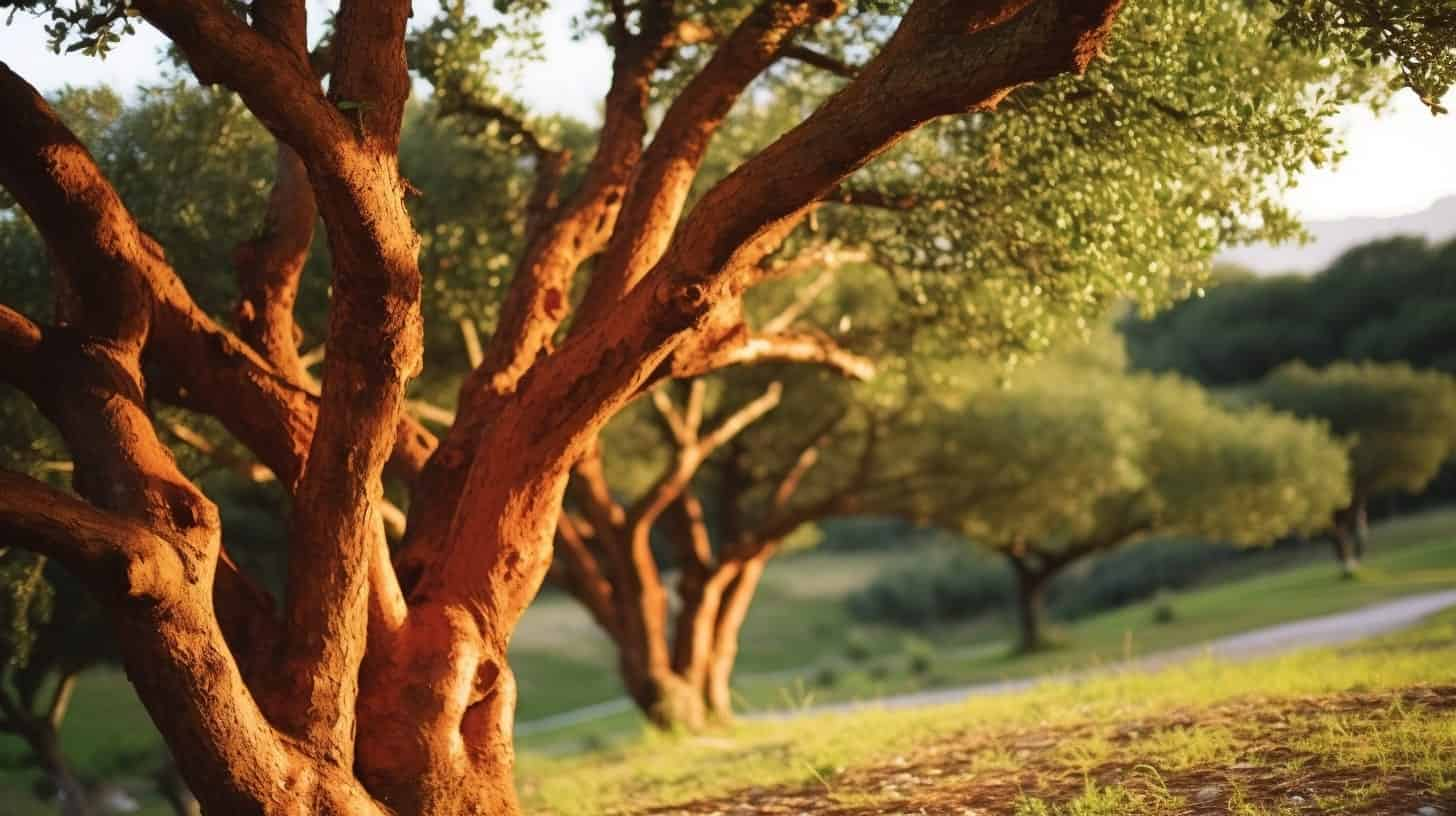

Plant Care
Where Do Cork Trees Grow
Published: October 24, 2023
Discover where cork trees grow and learn essential plant care tips for these unique trees. Find out how to properly nurture and maintain cork trees to ensure their health and longevity.
(Many of the links in this article redirect to a specific reviewed product. Your purchase of these products through affiliate links helps to generate commission for Chicagolandgardening.com, at no extra cost. Learn more)
Table of Contents
Introduction
Plant care is an essential aspect of maintaining a healthy and thriving garden or indoor plant collection. Whether you are a seasoned plant enthusiast or a beginner, understanding the needs of plants and providing proper care can significantly impact their growth and overall well-being. One particular area of plant care that often requires attention is the proper care of cork trees.
Cork trees, scientifically known as Quercus suber, are unique and fascinating trees known for their durable and renewable bark, which is commonly harvested to make cork. These trees not only provide a sustainable source of cork for various industries but also offer ecological benefits and cultural significance.
Throughout this article, we will explore the climatic requirements, geographic distribution, and commercial cultivation of cork trees. Understanding these factors will not only enhance our knowledge of these remarkable trees but also guide us in providing optimal care for cork trees in different environments.
So, whether you have a cork tree at home or are considering planting one, let’s delve into the world of cork trees and discover how to nurture them for optimal growth and longevity!
Climate Requirements for Cork Trees
Cork trees have specific climate requirements to thrive and produce high-quality cork. These trees are native to Mediterranean regions, where they have evolved to adapt to the region’s unique climate conditions.
First and foremost, cork trees require a Mediterranean climate, characterized by hot, dry summers and mild, wet winters. They prefer regions with long, warm growing seasons and ample sunlight. These conditions allow the trees to photosynthesize efficiently and produce the energy needed for bark regeneration.
Regarding temperature, cork trees can tolerate a wide range of temperatures. They can withstand both extreme heat and occasional frosts. However, they thrive in areas where the average annual temperature ranges between 12 to 20 degrees Celsius (54 to 68 degrees Fahrenheit).
The rainfall patterns and soil moisture levels also play a crucial role in the growth and development of cork trees. They require a moderate amount of rainfall, preferably between 600 to 1200 millimeters (24 to 47 inches) annually, with a well-distributed distribution throughout the year. This ensures that the tree’s root system receives a consistent supply of moisture, keeping the tree healthy.
As for soil conditions, cork trees prefer well-drained soils with a pH level ranging from 6 to 7.5. They can grow in a variety of soil types, including sandy, loamy, and clay soils, as long as they are well-drained. The soil should also be rich in organic matter to provide the necessary nutrients for the tree’s growth.
It’s important to note that although cork trees have specific climate requirements, they are relatively tolerant of short periods of drought and can adapt to different microclimates within the Mediterranean region. However, extreme climate variations, such as prolonged droughts or excessive rainfall, can negatively impact the tree’s growth and cork quality.
Understanding the climate requirements of cork trees is vital when considering planting them in your garden or cultivating them commercially. By providing the appropriate climate conditions, you can ensure the health, vitality, and longevity of these remarkable trees.
Geographic Distribution of Cork Trees
Cork trees, also known as Quercus suber, have a specific geographic distribution primarily centered around the Mediterranean region. This region provides the ideal climate and environmental conditions for the growth and thriving of cork trees.
The native range of cork trees includes countries such as Portugal, Spain, France, Italy, and Morocco. These countries have a long history of cork production and have been at the forefront of cork tree cultivation for centuries.
One of the primary reasons for the concentration of cork trees in these areas is the Mediterranean climate, which encompasses hot, dry summers and mild, wet winters. This climate allows for the proper development of the tree and ensures the production of high-quality cork.
Within Europe, Portugal stands out as the largest producer of cork, with extensive cork oak forests covering vast areas of the country. The Alentejo region, in particular, is famous for its cork production and is responsible for supplying a significant portion of the world’s cork needs.
Alongside Portugal, Spain also boasts a substantial cork industry, with regions like Extremadura and Andalusia contributing to the country’s cork production. These areas have favorable climatic conditions, making them ideal for cork tree cultivation.
The Mediterranean region expands beyond Europe, encompassing parts of North Africa and Asia. In North Africa, countries like Morocco, Algeria, and Tunisia have significant cork oak forests, which play a crucial role in the local economy and biodiversity.
In Asia, cork trees can be found in regions of Turkey, where they have been cultivated for commercial purposes. The country’s climate and soil conditions are conducive to the growth of cork trees, allowing for a successful cork industry.
Overall, the geographic distribution of cork trees is primarily concentrated in Mediterranean countries with suitable climate and soil conditions. These regions have long history and expertise in cork production, making them essential contributors to the global cork industry.
Understanding the geographic distribution of cork trees can aid in the planning and cultivation of cork tree plantations. By identifying regions with suitable environmental conditions, we can ensure the sustainable growth and preservation of this important species.
Native Range of Cork Trees
Cork trees, scientifically known as Quercus suber, have a native range that is primarily centered around the Mediterranean basin. This region encompasses various countries in Southern Europe, North Africa, and parts of Asia.
The cork oak, as it is commonly referred to, is native to countries such as Portugal, Spain, France, Italy, and Morocco. These countries have a long history of cork production and have been cultivating cork trees for centuries.
Portugal, in particular, is renowned for its vast cork oak forests, with the Alentejo region being the primary hub of cork production. The country’s unique climate and soil conditions create an ideal environment for the growth and development of cork trees, resulting in high-quality cork production.
Spain also has a significant native range of cork trees, with regions like Extremadura and Andalusia being prominent contributors to the country’s cork industry. These areas provide suitable climatic conditions, with hot summers and mild winters, necessary for optimal growth and cork production.
France, Italy, and Morocco also have notable cork oak populations within their borders. In France, cork trees can be found in regions like Corsica and the Languedoc-Roussillon. In Italy, regions such as Sardinia and Sicily are known for their cork oak forests. In Morocco, cork trees can be found primarily in the northern regions of the country.
Outside of the Mediterranean basin, cork trees can also be found in parts of Asia. Turkey, in particular, has a native range of cork trees, with regions like Izmir and Antalya being known for cork production. The country’s climatic conditions and suitable soils make it a viable location for cork tree cultivation.
The native range of cork trees demonstrates their adaptability to Mediterranean climates and their importance in the ecosystems of these regions. These trees provide valuable habitats and contribute to the biodiversity of the areas where they naturally occur.
Understanding the native range of cork trees helps to inform conservation efforts and sustainable cultivation practices. By preserving and cultivating cork trees within their natural range, we can ensure the continued availability and ecological benefits of this remarkable species.
Cork Trees in Europe
Europe is home to a significant population of cork trees, particularly in countries surrounding the Mediterranean basin. These trees, scientifically known as Quercus suber, have a long history and cultural significance in the European region.
Portugal holds prominence in Europe as the largest producer of cork. The country’s cork oak forests cover vast areas, with the Alentejo region being the main hub of cork production. Portuguese cork is known for its exceptional quality and is used in various industries, including wine, construction, and fashion.
In Spain, cork oak forests can be found in regions like Extremadura, Andalusia, and Catalonia. These areas contribute significantly to Spain’s cork industry and have a rich tradition of cork harvesting and processing. Spanish cork is highly valued for its versatility and durability.
France and Italy also have notable cork oak populations within their territories. In France, cork trees can be found in regions like Corsica and the Languedoc-Roussillon. The French cork industry focuses primarily on wine stoppers, with cork from these areas being highly sought after by winemakers worldwide. In Italy, regions such as Sardinia and Sicily have thriving cork oak forests, and Italian cork is used in a range of products, including fashion accessories and home decor.
Other European countries, such as Greece, Tunisia, and Algeria, also have significant cork tree populations. These trees contribute to the local economies and biodiversity of these regions. Greek cork, for example, is recognized for its unique texture and is used in artisanal products.
The cultivation and harvesting of cork trees in Europe are deeply rooted in tradition and sustainable practices. The process of extracting cork from trees involves carefully removing the outer bark without harming the tree, allowing the bark to regenerate over time.
The environmental benefits of cork trees further highlight their importance in Europe. These trees act as carbon sinks, absorbing carbon dioxide from the atmosphere and mitigating climate change. They also provide habitat for various plant and animal species, contributing to biodiversity conservation.
Europe’s cork industry is not only significant in terms of economic production but also cultural heritage and environmental sustainability. The cultivation and use of cork in various sectors have been passed down through generations, making it an integral part of European identity and promoting sustainable practices.
With its rich history, cultural significance, and environmental benefits, cork tree cultivation continues to thrive in Europe, ensuring the availability of this remarkable material for future generations.
Cork Trees in the Mediterranean Region
The Mediterranean region is known for its vast population of cork trees, which play a critical role in the ecological and economic landscape of the area. Cork trees, scientifically known as Quercus suber, thrive in the Mediterranean climate, making this region ideal for their growth and cultivation.
Portugal and Spain are the primary countries in the Mediterranean region that have extensive cork oak forests. Portugal, in particular, has a long history of cork production and is the largest producer of cork globally. The Alentejo region in Portugal is renowned for its cork oak forests, which provide a sustainable source of high-quality cork.
In Spain, regions such as Extremadura, Andalusia, and Catalonia also have significant cork tree populations. These areas have favorable climatic conditions and a rich cultural heritage associated with cork harvesting and processing. Spanish cork is highly regarded across various industries, including wine, construction, and fashion.
Italy, France, and Greece also have notable cork oak populations within the Mediterranean region. In Italy, regions like Sardinia and Sicily have thriving cork forests, and Italian cork is used in a variety of products. France, with its regions like Corsica and Languedoc-Roussillon, is known for its sustainable cork harvesting practices. Greece also cultivates cork trees, contributing to the local economy and preserving the traditional craftsmanship associated with cork processing.
Alongside Europe, North African countries such as Morocco, Algeria, and Tunisia also have significant cork tree populations. These countries have a long history of cork production and export, with cork playing a vital role in the local economy. North African cork is known for its unique characteristics and is used in various industries.
Cork trees in the Mediterranean region serve not only as a source of cork but also as valuable ecosystems. They provide habitats for diverse species of flora and fauna, contributing to biodiversity conservation in the region. The cork oak forests also act as carbon sinks, helping to mitigate climate change by absorbing carbon dioxide from the atmosphere.
The Mediterranean region’s commitment to sustainable cork harvesting and cultivation practices ensures the preservation of these precious ecosystems and supports the livelihoods of local communities. Through responsible management, the Mediterranean continues to be a major hub for cork production, supplying industries worldwide with a renewable and environmentally friendly material.
Cork Trees in North Africa
North Africa is home to a significant population of cork trees, contributing to the region’s rich cultural heritage and economic development. Cork trees, scientifically known as Quercus suber, thrive in the unique climate of North Africa, making this region an important hub for cork production.
Morocco, Algeria, and Tunisia are the primary countries in North Africa known for their cork oak forests. These countries have a long history of cork production and export, playing a crucial role in the global cork industry.
In Morocco, cork trees can be found primarily in the northern regions of the country. Moroccan cork is highly valued for its unique characteristics, such as its distinctive pattern and texture. The country’s cork industry contributes significantly to the local economy and provides employment opportunities for many rural communities.
In Algeria, cork oak forests are prevalent in the coastal and mountainous regions. Algerian cork is known for its high quality and is used in various industries, including construction and handicrafts.
Tunisia, with its favorable climatic conditions, also cultivates cork trees. The country’s cork industry focuses on sustainable harvesting practices and promotes the use of cork in eco-friendly products.
North African cork oak forests not only provide a sustainable source of cork but also support local ecosystems. These forests are home to a diverse range of plant and animal species, contributing to the region’s biodiversity. The preservation and proper management of cork oak forests are essential for maintaining the ecological balance and ensuring the long-term sustainability of these ecosystems.
In addition to their ecological significance, cork trees in North Africa have cultural importance as well. Traditional cork harvesting and processing techniques have been passed down through generations, and the cork industry holds a significant place in local customs and traditions.
The North African region’s commitment to sustainable cork production and responsible forest management is crucial in protecting these valuable resources. By promoting sustainable practices and supporting local communities, North Africa continues to be a vital contributor to the global cork industry, ensuring the availability of this renewable and environmentally friendly material.
Cork Trees in Asia
While cork trees are primarily associated with the Mediterranean region, they can also be found in certain parts of Asia, particularly in Turkey. Cork trees, scientifically known as Quercus suber, have adapted to the climatic conditions in Turkey, making it a notable location for cork production in Asia.
Turkey has a rich history of cultivating cork trees, particularly in regions such as Izmir and Antalya. The country’s climate and soil conditions are conducive to the growth and development of cork trees, allowing for a successful cork industry.
Due to Turkey’s unique geographical position, cork trees in the country exhibit distinct characteristics compared to those in the Mediterranean region. The cork produced in Turkey has its own unique texture, quality, and aesthetic appeal, which makes it highly sought after in both domestic and international markets.
The cork industry in Turkey has experienced significant growth and has become an important contributor to the country’s economy. Turkish cork is used in various industries, including construction, fashion, and handicrafts.
Cork trees in Asia provide similar ecological benefits as their Mediterranean counterparts. These trees act as carbon sinks, capturing and storing carbon dioxide from the atmosphere, thus contributing to climate change mitigation. They also support local biodiversity by providing habitats for various plant and animal species.
While Turkey is the primary country in Asia known for its cork tree population, other Asian countries have also started exploring cork cultivation. With the increasing global demand for sustainable and eco-friendly materials, the potential for cork production and cultivation in Asia is expanding.
Understanding the unique characteristics of cork trees in Asia and their cultivation in countries like Turkey allows for the exploration and development of sustainable cork industries beyond the traditional Mediterranean region. Striking a balance between economic growth and environmental conservation will be crucial in ensuring the long-term sustainability of cork tree populations in Asia and their positive contributions to the global cork industry.
Commercial Cultivation of Cork Trees
The commercial cultivation of cork trees, scientifically known as Quercus suber, plays a significant role in the global cork industry. Proper cultivation practices are essential for the sustainable production of high-quality cork and the preservation of the cork tree population.
Commercial cork cultivation begins with selecting suitable sites for planting cork trees. The climate, soil conditions, and water availability are crucial factors to consider. Mediterranean regions with hot, dry summers and mild, wet winters provide optimal conditions for the growth of cork trees.
Once the site is selected, the process of planting cork trees begins. Cork trees are typically grown from acorns or propagated through vegetative methods. Careful attention is given to factors such as spacing between trees and proper soil preparation to ensure healthy growth and optimal cork production.
After planting, cork tree saplings require regular care and maintenance. Adequate irrigation, especially during the establishment phase, helps promote healthy root development. Regular pruning is also necessary to shape the tree and improve sunlight penetration, leading to better cork quality.
One of the most important aspects of commercial cork cultivation is the process of cork harvesting. The outer bark of the cork tree, known as the cork cambium, is carefully stripped away to obtain cork. This process is carried out by skilled workers who ensure that the tree remains unharmed.
Cork trees are known for their remarkable ability to regenerate their bark, allowing for multiple harvesting cycles. After each harvest, the tree undergoes a period of recovery, during which the bark regrows, typically taking around 8-12 years for it to be thick enough for the next harvest.
Cork quality is also a crucial consideration in commercial cork cultivation. The duration of the cork’s growth and the conditions in which the tree is grown can influence its quality. Proper care, including managing pests and diseases, ensures that the cork produced is of the desired quality and suitable for various industrial applications.
Commercial cultivation of cork trees provides numerous ecological, economic, and social benefits. The cultivation of cork trees contributes to carbon sequestration, helps support local ecosystems, and preserves biodiversity. It also provides employment opportunities in rural areas, particularly during the cork harvest season.
Furthermore, the demand for sustainable and eco-friendly materials has increased the global demand for cork. From its use in wine bottle stoppers to flooring, insulation, and fashion accessories, cork’s versatility has solidified its position as a desirable and environmentally-friendly choice for various industries.
By implementing sustainable cultivation practices, promoting responsible harvesting techniques, and ensuring the preservation of cork tree populations, the commercial cultivation of cork trees can continue to thrive, supporting the global demand for this remarkable and renewable material.
Conclusion
Plant care is essential for the well-being of any plant, and when it comes to cork trees, understanding their unique needs is crucial. Cork trees, also known as Quercus suber, have specific climate requirements that center around the Mediterranean region. They thrive in regions with a Mediterranean climate characterized by hot, dry summers and mild, wet winters.
Geographically, cork trees are native to countries in Southern Europe, North Africa, and parts of Asia. Portugal stands out as the largest producer of cork, with extensive cork oak forests covering areas in the Alentejo region. Spain, France, Italy, Morocco, and countries within the Mediterranean basin also have substantial populations of cork trees.
North Africa, particularly Morocco, Algeria, and Tunisia, is known for its cork oak forests, contributing significantly to the global cork industry. In Asia, cork trees can be found primarily in Turkey, where the country has cultivated a successful cork industry.
The commercial cultivation of cork trees is essential for the sustainable production of high-quality cork. Proper cultivation practices, including site selection, planting, irrigation, pruning, and harvesting, are key factors in ensuring the well-being of cork trees and the production of top-grade cork.
The global demand for sustainable and eco-friendly materials has led to increasing appreciation for cork’s versatility and environmental benefits. Cork trees not only provide a renewable source of cork but also offer ecological advantages, acting as carbon sinks and supporting biodiversity.
By understanding the specific climate requirements and geographic distribution of cork trees, we can foster their preservation, implement sustainable cultivation practices, and support the global cork industry. Proper care and cultivation of cork trees ensure the availability of this remarkable material for various industries, while also promoting environmental sustainability and supporting local communities.
So, whether you have a cork tree at home or are considering planting one, remember to provide the optimal climate conditions and adhere to responsible harvesting practices. Embrace the remarkable qualities of cork trees and contribute to the preservation of these valuable ecosystems and the continuation of the centuries-old tradition of cork production.
